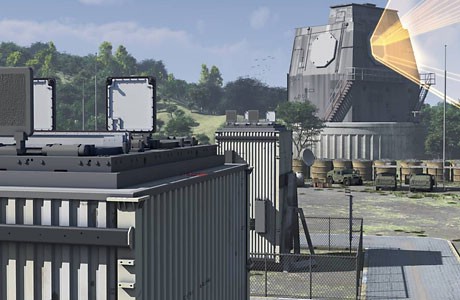
Since the following story was posted, Lockheed Martin has said it was not currently studying adding an anti-air warfare (AAW) capability to Aegis Ashore ballistic missile defense (BMD) sites for the Missile Defense Agency. Read the follow-on story here.
Lockheed Martin is studying adding an anti-air warfare (AAW) capability to Aegis Ashore ballistic missile defense (BMD) sites, company officials told reporters on Friday.
The studies are not in advance of a new program of record for modifications of the installations and are at the behest of the Missile Defense Agency, said Jim Sheridan, Director of AEGIS development for Lockheed Martin in a briefing to reporters ahead of the Navy League Sea-Air-Space Exposition 2015.
“There’s been some discussion over the past couple of years about the possibility of reconstituting or adding an AAW capability to the Aegis Ashore configuration,” he said.
“We’ve been turned on to do some studies on what it would take to do that going forward in the future.”
Aegis Ashore — created in conjunction with MDA and the Navy — uses the SPY-1D radar and the MK 41 vertical launch system tubes native to the Navy’s Arleigh Burke guided missile destroyers (DDG) to detect and launch Standard Missile 3 interceptors to counter ballistic missile threats.
Since most of the hardware is the same, Sheridan said it would not be difficult to reconfigure the installations in Poland and Romania.
“There is no program of record to reconstitute or add AAW capabilities to the Aegis Ashore configuration, but they’re just asking in the event in the future … what it would take to do that,” he said.
“We think it wouldn’t not be tremendously difficult because that’s the same configuration we’re delivering to destroyers today.”

Some in Congress have raised the possibility of including the AAW capability in the installations.
However the likelihood of the Navy and MDA including the capability is low.
Defending against a BMD threat specifically versus a traditional AAW threat is very different. Its easier to figure out the probable direction of a BMD threat and the initial notification of a launch seldom comes from a ship’s own radar systems.
In an AAW configuration, the radar is constantly on searching for threats that could come from any direction pumping out electrical magnetic energy that could interfere with other military or civilian frequencies without prior coordination.
There are also political considerations.
Navy Capt. Jeff Weston, the Aegis Ashore program manager for the Missile Defense Agency (MDA) told USNI News in 2013 while Aegis Ashore could perform AAW, “we’re not going to do anti-air warfare in someone else’s country,” he said.
The first Aegis Ashore site in Romania is set to go online later this year.





